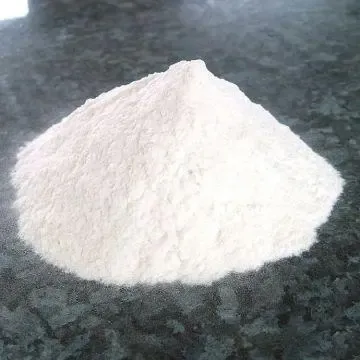
Nov . 08, 2024 23:05 Back to list
Synthesis and Applications of Mesoporous Titanium Dioxide in China
Mesoporous Titanium Dioxide A Promising Material from China
In recent years, mesoporous materials have garnered significant interest in various fields, including catalysis, drug delivery, and energy storage. Among these materials, mesoporous titanium dioxide (TiO2) stands out due to its unique properties and wide range of applications. China, as a leader in materials science, has made tremendous advancements in the development and synthesis of mesoporous TiO2, pushing the boundaries of its functionality and applicability.
What is Mesoporous Titanium Dioxide?
Mesoporous titanium dioxide refers to a form of TiO2 characterized by its porous structure with pore sizes between 2 and 50 nanometers. This mesoporosity provides a high surface area, allowing for better interaction with the surrounding environment. TiO2 itself is known for being a photocatalyst and an excellent material for environmental remediation, especially in degrading organic pollutants under light exposure. When engineered into a mesoporous structure, the efficiency of TiO2 can be significantly enhanced.
Synthesis Techniques
Chinese researchers have developed various synthesis approaches to create mesoporous TiO2 with tailored properties. Common methods include sol-gel synthesis, hydrothermal methods, and templating techniques. The sol-gel process is widely favored due to its simplicity and the ability to control the porous structure during synthesis. In this method, titanium alkoxide is used as a precursor, resulting in a gel that transforms into mesoporous TiO2 upon calcination.
The hydrothermal method, on the other hand, involves heating a titanium precursor in a closed vessel, which allows for the formation of mesoporous structures under elevated temperature and pressure. This method can also yield highly crystalline forms of TiO2, such as anatase, which exhibit superior photocatalytic performance.
Applications in Environmental Remediation
One of the most significant applications of mesoporous TiO2 is in environmental remediation. The enhanced surface area and porosity facilitate the adsorption of pollutants, such as heavy metals and organic compounds. When activated by UV light, mesoporous TiO2 can effectively generate reactive oxygen species (ROS), which are essential for breaking down various contaminants.
Research conducted in China has shown that mesoporous TiO2 can degrade pollutants like dye molecules and pesticides efficiently, making it a promising candidate for wastewater treatment systems
. The ability to operate under sunlight is an additional advantage, contributing to sustainable environmental practices.china mesoporous titanium dioxide

Photocatalytic Applications
Beyond environmental applications, mesoporous TiO2 has shown remarkable potential in photocatalytic processes, particularly in hydrogen production and CO2 reduction. In photocatalysis, TiO2 absorbs light and harnesses its energy to drive chemical reactions. Chinese innovators have been at the forefront of developing mesoporous TiO2 catalysts that improve hydrogen evolution from water splitting, thus addressing energy challenges.
Additionally, utilizing mesoporous TiO2 for CO2 reduction can contribute to the mitigation of climate change. Research is ongoing to optimize the catalytic processes and improve the selectivity and yield of desired products, showcasing the material’s versatility.
Biomedical Applications
The mesoporous structure of TiO2 also finds applications in the biomedical field, particularly in drug delivery and imaging. The high surface area allows for the loading of various therapeutic agents, making it a vehicle for targeted drug delivery. Researchers in China are exploring the use of mesoporous TiO2 in delivering anticancer drugs, enhancing their efficacy while reducing side effects.
Moreover, the biocompatibility of TiO2 makes it suitable for use in medical implants and tissue engineering. The incorporation of bioactive molecules into the mesoporous structure can promote cell growth and tissue regeneration, highlighting its multifaceted role in biomedicine.
Future Directions
As the field of mesoporous materials continues to evolve, the future of mesoporous TiO2 remains promising. Ongoing research strives to enhance its properties and functionalities, such as improving photostability, further increasing surface area, and tailoring pore sizes. Moreover, integrating mesoporous TiO2 with other materials could open new avenues for composite materials with advanced functionalities.
China's dedication to materials science and engineering will likely solidify its role as a leader in the advancement of mesoporous titanium dioxide, driving innovation that addresses environmental challenges and enhances technological applications across multiple sectors. With concerted efforts, mesoporous TiO2 can play a pivotal role in creating a sustainable future.
-
Titania TiO2 Enhanced with GPT-4 Turbo AI for Peak Efficiency
NewsAug.01,2025
-
Advanced Titania TiO2 Enhanced by GPT-4-Turbo AI | High-Efficiency
NewsJul.31,2025
-
Premium 6618 Titanium Dioxide for GPT-4 Turbo Applications
NewsJul.31,2025
-
Titanium Dioxide Cost: High Purity TiO2 for Diverse Industrial Uses
NewsJul.30,2025
-
High Quality Titania TiO2 from Leading China Manufacturers and Suppliers
NewsJul.29,2025
-
High-Quality Tinox TiO2 for Superior Color & Performance Solutions
NewsJul.29,2025
